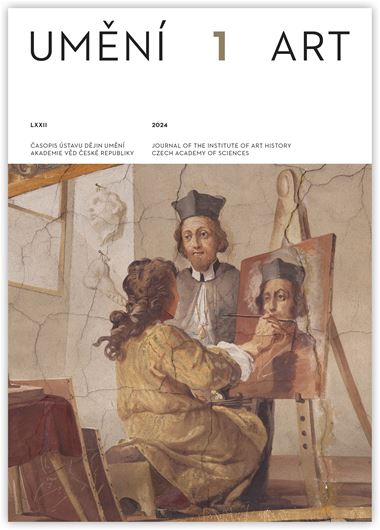Martin Mádl
‘Pictori eventus visus est mirabilis ...‘ The Spanish Theme in the Painted Decoration of the Church of St. John of Nepomuk at Hradčany
‘Pictori eventus visus est mirabilis ...‘ The Spanish Theme in the Painted Decoration of the Church of St. John of Nepomuk at Hradčany
The text discusses the interpretation of the posthumous miracles of St. John of Nepomuk depicted on four illusive tapestries in the ceiling paintings of the church of St. John of Nepomuk at Hradčany. These paintings were executed by Wenceslas Lawrence Reiner around 1727. While two of the themes have been previously identified, the other two are specified in the text with references to contemporary literature. Greater attention is paid to the painting depicting the painter in his studio creating a portrait of St. John of Nepomuk, while two cavaliers wait in the anteroom for the painting to be completed. One of the cavaliers, dressed in black court attire, is likely a Spanish nobleman. The painting’s subject is believed to have originated from the book Cultus Specialis per bonum linguae usum exhibendus B. Joanni Nepomuceno... which was published in Mainz, Germany, in 1725. The book recounts the story of a prominent Spanish courtier who fell out of favour with the king and was stripped of his fame and office. He was later reinstated thanks to the miraculous intervention of St. John of Nepomuk. The nobleman dreamt of the Czech martyr and decided to have him painted. The painter commissioned for the task was initially unsure how to proceed until the saint himself volunteered to sit for the painting. The Mainz publication does not specify the identity of the Spanish nobleman and painter in question. However, it is possible that the story took place shortly after 1680, when knowledge of St. John of Nepomuk became more widespread due to his biography by Bohuslaus Balbinus in the third volume of the Acta Sanctorum. The aristocrat in question may have been Gaspar Téllez-Girón y Sandoval, Vth Duke of Osuna (1625–1694) or Manuel Joaquín Álvarez de Toledo y Portugal, VIIIth Count of Oropesa (1641–1707). It is possible that the motif of the painter creating the saint’s likeness reflected the artists’ desire to emphasize the importance of their own profession and to highlight the role of artists in promoting the new cult.
Author's email:
madl@udu.cas.cz
DOI: HTTPS://DOI.ORG/10.54759/ART-2024-0102
Full-text in the Digital Library of the Czech Academy of Sciences:
https://kramerius.lib.cas.cz/uuid/uuid:3e574116-0192-4082-b3ce-89176b46d79b
< back

